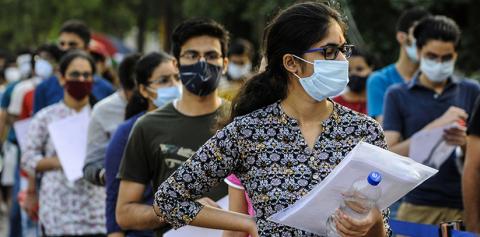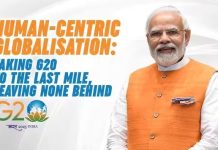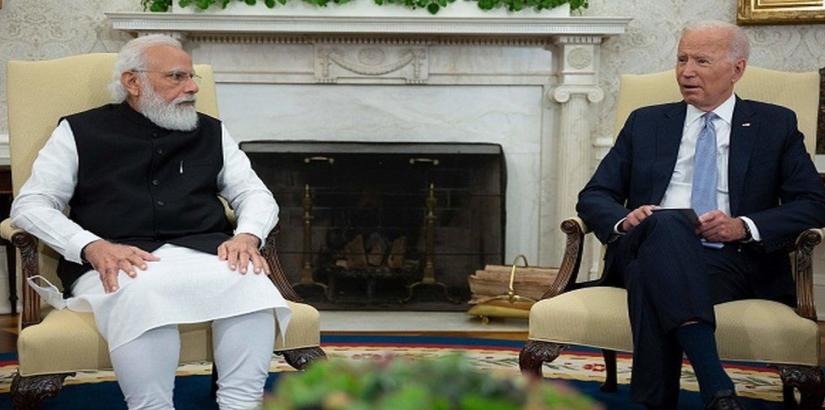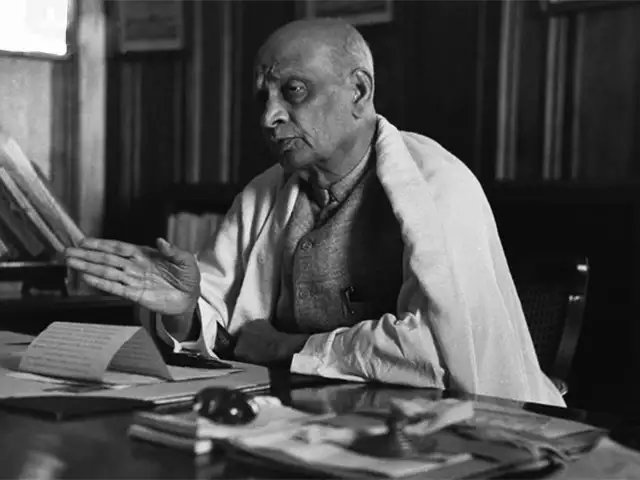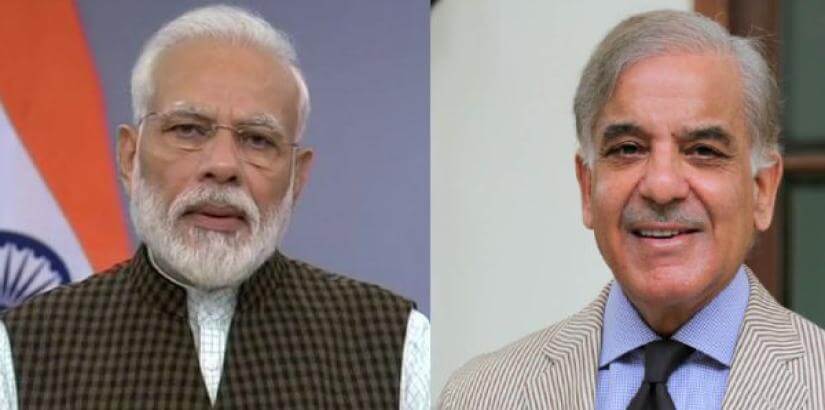Amit Dasgupta
The raging pandemic has had a devastating impact on the education sector in India. It is, however, early stages for a credible evidence-based study to report on the intensity and extent of disruption it has had on students, the teaching and administrative community, and on educational institutions.
This has truly emerged as one of the grand challenges for India coming, as it does, on the back of the existing crisis in Indian education. Indeed, it would be fair to say that India’s education sector has been on a ventilator for decades because of political apathy and systemic neglect.
Wasted decades resulted in education, in both schools and colleges, going into free fall. A lack of basic infrastructure, absence of qualified teachers/faculty, leaking of question papers, rampant corruption, and cheating, mushrooming of dubious and fly-by-night educational institutions, an obsolete pedagogy, and curriculum, a horrific demand-supply mismatch, a clear divide between the rich kids and the marginalized are only some of the ills that defined our education sector. Small wonder then that our graduates were unemployable in their respective areas of specialization.
The quality of a nation’s human capital impacts its GDP and indeed, its global reputation. India took great pride in its young population and reveled in the idea of a demographic dividend that would allow it to meet the global demand for a professional workforce. Such an eventuality is entirely conditional on a robust and contemporary education system, which India sorely lacks at present.
Pandemic has crippled education
Tragically, even before the current ills could be addressed meaningfully through transformative policy reforms, the pandemic struck. It has further crippled the struggling and beleaguered sector.
Consider some basic facts: The government announced lockdown in the third week of March, resulting in the closure of education institutions pan-India resulting in the disruption of teaching and examination schedules, re-crafting a new examination methodology and timetable, the introduction of online study, a sharp loss in revenue, the closure of several educational institutions on financial grounds and also, de-hiring of teachers and administrative staff in schools and colleges. It is credibly estimated that schools and colleges are not likely to open for face2face classes at least till the end of the year and possibly well into 2021.
One of the positive fallouts of the pandemic have been the forced introduction of online education that has totally disrupted and transformed the teaching landscape. There are, of course, significant challenges. Many confuse online study as being another name for a correspondence course. Teachers and students are unfamiliar with online teaching and learning triggering resistance and a view that online study is inferior to classroom learning.
In addition, equity issues have significantly prevented access to the platform since the majority of students come from underprivileged families who do not have access to the internet. Furthermore, the internet itself is not widely available pan-India.
The recent suicide of a bright young student from a prestigious women’s college because her parents could not afford the tuition fees and the cost of a laptop are a sobering reminder that equity is a genuine problem.
What is certain is that online study is here to stay, even after the pandemic is over. Its biggest advantage is that it can revolutionize the learning footprint making ‘education for all’ a reality. However, for this to happen, the internet footprint needs to significantly increase, consciousness on the advantages of online study enhanced and the quality of online teaching majorly improved.
International studies a casualty
Several Indian students have annually pursued higher education abroad with the US being the primary destination of choice. This was entirely attributable to positive perceptions with regard to studying and staying on post-study in the US and pursuing a life of opportunity. This can be called ‘the pull factor’ or the lure, if you like, of living and studying abroad, especially in the US. Few went to Harvard, MIT, Stanford or Yale because the majority enrolled in second or third-tier US universities. They studied hard and did well. Many became US citizens and rose to positions of prominence.
Over time, things changed because of an acute demand-supply mismatch. Admission in the better-known Indian colleges and universities became increasingly difficult because of the entry and eligibility criteria. This year, Delhi University has put 100 percent as the minimum academic scores for admission in certain subjects. This totally absurd requirement is to prevent disrupting the faculty-student ratio in classrooms and negatively impact the quality of education. Consequently, several students are forced to seek education in lesser-known institutions in India or overseas. This is ‘the push factor’.
The large outmigration of Indian students was welcomed by international universities, as it significantly contributed to their revenue. According to the US government data, the annual revenue from tuition fees and living expenses from international students is estimated at US$ 44 billion. In the case of Australia, it is upwards of AUD$ 20 billion.
The pandemic has had a seriously negative impact on the migration of international study. At one level, the disruption in examination schedules and testing methodology in India has prevented study applications from being submitted on time with full documentation. At another level, international travel restrictions bar students from on-campus study till such time as the restrictions are lifted. Given the growing number of cases in India, whether India would be among the first cohort of countries that would be allowed to enter the US or other destinations, like the UK or Australia, is a matter of speculation.
There is a third critical factor and that relates to the downturn in the Indian economy and while there are some positive signs of improvement over the past two months, it is a fact that the lockdown has resulted in a loss in earnings for many people. Student loans have become increasingly difficult and many parents are unable to afford the high tuition and living expenses of overseas education.
Aversion continues with online study and when the delivery is done from abroad, the interactive sessions, because of the time difference, occur at odd hours. Students and parents complain that tuition fees for online study should not cost the same as an on-campus study. Consequently, even those students whose parents are able to find the financial resources to pay for overseas study are opting to defer their enrolment till such time as face2face study is possible.
There appears, therefore, significantly decreased the likelihood of Indian students going abroad for study in the near future. As per current estimates, the earliest they are likely to be able to travel and enroll would be in the third quarter of 2021.
Foreign universities are, consequently, also facing the brunt of the pandemic as they are unable to rely at present on revenue from international students. Several have to rethink their own survival and business model. For those that are internationally ranked, it is a matter of improving operational efficiency through minimizing costs. Many have downsized or ‘right-sized’ by dismissing staff and personnel and restructuring their schools. Funding for research, which is one of the critical pillars of great education, is under severe stress.
Key interventions required
If students are unable to enter institutions of choice in India or go abroad for higher studies, a mushrooming of dodgy colleges is anticipated. This would adversely impact India’s human capital with long-term consequences.
India faces a grave challenge that has been accentuated by the pandemic. The crisis needs to be seen as a national imperative and addressed through a collective stakeholder approach with a sense of extreme urgency. This requires a coming together of the government, the bureaucracy, the business community, and civil society.
Some key interventions that might be considered are:
- A single-minded focus and investment in expanding our internet footprint to make it accessible and affordable and thereby, address the equity issue to some extent;
- The mass production of tablets for free or subsidized distribution to all students, who are unable to afford the purchase of the same. India has demonstrated during the pandemic how it was able to mass-produce ventilators and PPE kits from extreme shortage to exporting it;
- Requisition of all schools – both private and government – in the evenings for imparting education and tuition to marginalized communities. Most schools operate only till around 4 pm and after that, the real estate they occupy adds zero value to the community that it is meant to serve;
- Large-scale teacher training modules in collaboration with the private sector to upgrade the quality of our education and pedagogy;
- Tapping into the resources of retired personnel from the armed forces, civil servants and employees of public and private sector organizations to immediately address the shortfall in the teaching community;
- Creation of social awareness of the importance of online education and collaborating with foreign institutions to provide top quality online programs for students; and
- Reporting, reviewing and monitoring through data on progress.
Unless India and, more importantly, Indians recognize the challenge we face, lessons from the pandemic would not have been learnt. South Asia Monitor

